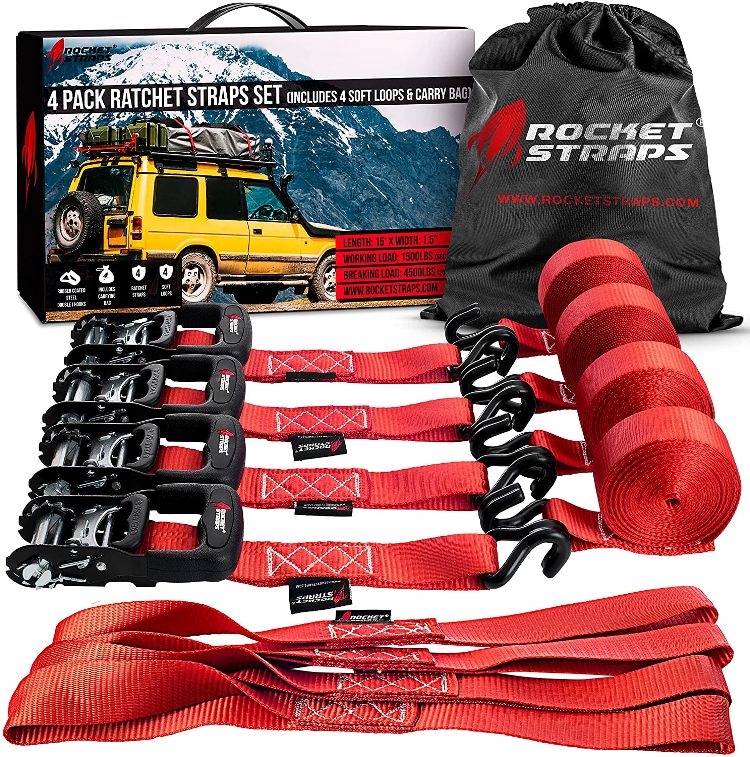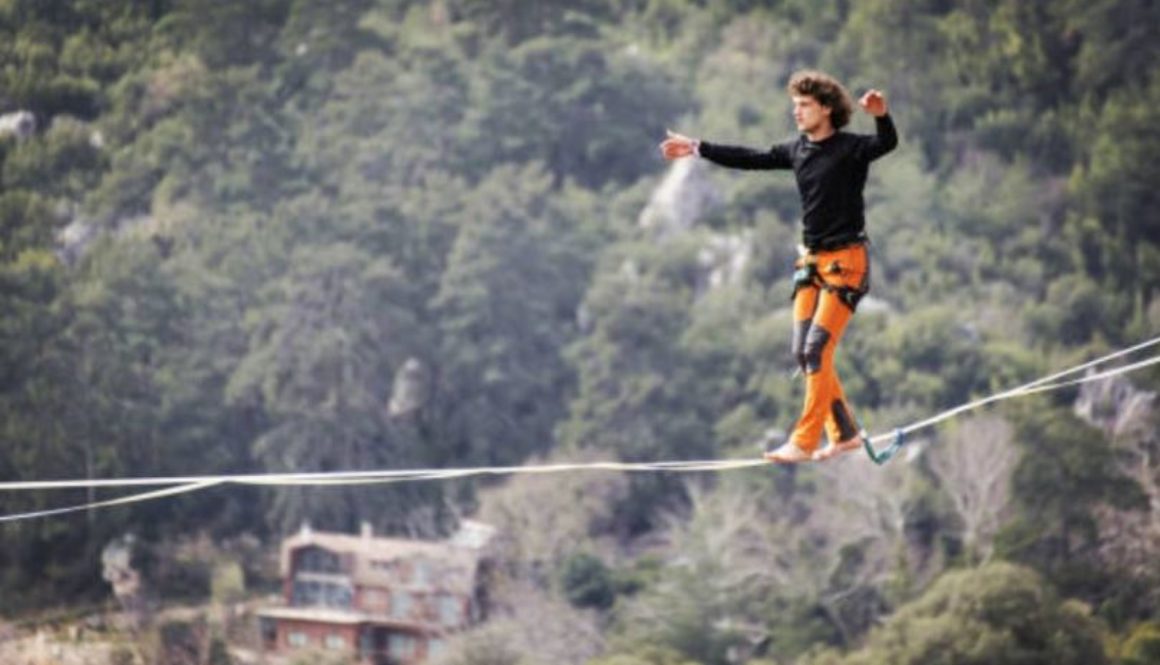Slackline vs. Ratchet Strap: What’s The Difference?
Slackline sport or Ratchet Strap: What’s The Difference? Slackline is a type of balance and movement sport that involves walking on a flexible 1 or 2-inch wide strap called webbing. The line is set between two anchor points anywhere from 3 to 3,000 feet in the air.
Slacklining is a type of tightrope walking in which the line is made of nylon webbing rather than cable or rope. You won’t find any self-respecting slackliner using a long balance pole, either.
What is A Slackline?
A slackline is a rope made from a Polyester webbing blend that is tied between two different anchor points. Traditionally a slackline is tied to trees, however, can be secured to just about any two anchors such as wooden poles.
What sets slacklines apart from other tightrope alternatives is the amount of tightening required of the rope. Consider Slacklines to be more like a trampoline than a traditional tightrope, allowing for greater bounce and mobility than the former.
No products found.
Slackline has grown to be popular among both novices and some of the world’s most experienced slackliners, who may be classified as slackline experts.
Slacklines are constructed of the same material as ratchet ties used in the transportation sector. Slackline materials range from 1 inch to 2 inches wide, depending on skill level, with polyester webbing typically on one side or the other.
Slacklines are fun for everyone. Slackers will want to try it out right away, while some experienced slackliners may need a little time to get used to the new experience. Slacklines require some practice but the excitement and gratification are well worth it. Slacklines are an excellent method to spend a lovely day in the park with your family and friends.
If you want to know how to slackline, there are thousands of internet tutorials accessible, including YouTube, that may help you learn.
There are levels for everyone to advance with, regardless if you’re a novice or a pro wanting to learn a new slackline move. One of our favorite beginner’s guides for slacklines and how to set up a slackline with a ratchet is shown below.
What is a Ratchet Strap?
The use of straps and tie-downs, sometimes known as lashing straps and tie-downs, to keep equipment and cargo of various weights, sizes, and forms in place is a popular way to do it.
They’re popular with truckers because they’re used to fasten and secure equipment and cargo during transportation, making them an essential health and safety tool for keeping loads from falling off the vehicle until delivered and removed.
They’re made from sturdy, long-lasting, polyester webbing to minimize stretchability and keep loads in motion.
The tow bar in the vehicle’s bumper is used to tow a vehicle. It may be attached to the vehicle with straps or chains, and it may be used to pull people in your neighborhood when you’re out of town. If you pass trucks or lorries transporting freight on a highway, there’s a good chance this is the equipment that holds
They can be utilized for a variety of purposes, including car recovery and automobile transportation. Cars may be transported on the back of trucks, heavy equipment moved, goods kept on a freight plane, ship, and train held down, and they’re even useful for personal use.
Because of the different safety factors for lifting equipment from those for lashing equipment, they can’t be used to lift anything with a safety factor greater than that of the lashing equipment. It’s critical to note that this must be stated on the label.
How To Use a Ratchet Strap?
Removing and replacing your strap is a bad idea. The straps must be in good working order in terms of making sure they’re tight enough and you adjust them when necessary to guarantee that they don’t slip down or cause the bottle to turn itself around by accident. This creates an issue where people think it will fall over if I don’t hold it
That is why, in this article, we’ll show you how to safely and effectively employ them when protecting your personal or commercial goods.
We always advise that you check the webbing and handle assembly for any damage and that they are safe to use for securing your goods.
- OPENING THE HANDLE
To remove the catch, known as the release lever, pull it back and release it. It’s comparable to a plane seat belt in that it is located in the middle of the item’s movable top piece.
Unfold the release catch and flip it fully open, then feed the end of the webbing through the open slot.
- ACCESSING THE AXLE ASSEMBLE
The next stage is to wrap the core and secure it with straps to keep it from moving.
- FEEDING THE STRAPPING THROUGH
Locate the bottom of the assembly, where there is a slot that runs along the center. The webbing or straps will be inserted from beneath and pushed through this slot before being stretched back out.
- ATTACHING THE HOOKS
The next step is to insert the ratchet assembly into position, followed by the hook on the other end of the webbing or strap. It’s critical to get it in place first before you can tighten up the strap later to keep the items secure.
- REMOVING THE SLACK
Then, using a small pair of pliers, carefully cut or break the wire as close to the first hook as possible and reattach any slack.
- TIGHTENING THE SLACK
You may then tighten the remaining slack to ensure it’s in place and in a secure location. It might be a bit of a tug-of-war until it’s in place and tightened securely.
However, don’t compress the strap too tightly, as this might cause your cargo and/or strap to be damaged, resulting in you needing to replace them before they’ve worn out entirely. Read more about Ratchet Straps.
- CLOSING THE HANDLE
When you’re done tightening the ratchet strap and it’s in a firm posture to hold the goods and cargo it’s carrying, flip it over and close the handle to lock it in place. It could also be that you didn’t tighten it enough or that there is a faulty product.


Welcome to my site. I am Clyde Rutz. I am 22 years old. I am a SlackLine specialist. You can ask any question to me. I will try to back soon as early as possible.

